Gap junctions in inherited human disorders of the central nervous system
- PMID: 21871435
- PMCID: PMC3771870
- DOI: 10.1016/j.bbamem.2011.08.015
Gap junctions in inherited human disorders of the central nervous system
Abstract
CNS glia and neurons express connexins, the proteins that form gap junctions in vertebrates. We review the connexins expressed by oligodendrocytes and astrocytes, and discuss their proposed physiologic roles. Of the 21 members of the human connexin family, mutations in three are associated with significant central nervous system manifestations. For each, we review the phenotype and discuss possible mechanisms of disease. Mutations in GJB1, the gene for connexin 32 (Cx32) cause the second most common form of Charcot-Marie-Tooth disease (CMT1X). Though the only consistent phenotype in CMT1X patients is a peripheral demyelinating neuropathy, CNS signs and symptoms have been found in some patients. Recessive mutations in GJC2, the gene for Cx47, are one cause of Pelizaeus-Merzbacher-like disease (PMLD), which is characterized by nystagmus within the first 6 months of life, cerebellar ataxia by 4 years, and spasticity by 6 years of age. MRI imaging shows abnormal myelination. A different recessive GJC2 mutation causes a form of hereditary spastic paraparesis, which is a milder phenotype than PMLD. Dominant mutations in GJA1, the gene for Cx43, cause oculodentodigital dysplasia (ODDD), a pleitropic disorder characterized by oculo-facial abnormalities including micropthalmia, microcornia and hypoplastic nares, syndactyly of the fourth to fifth fingers and dental abnormalities. Neurologic manifestations, including spasticity and gait difficulties, are often but not universally seen. Recessive GJA1 mutations cause Hallermann-Streiff syndrome, a disorder showing substantial overlap with ODDD. This article is part of a Special Issue entitled: The Communicating junctions, composition, structure and functions.
Copyright © 2011 Elsevier B.V. All rights reserved.
Figures
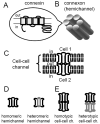
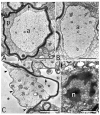



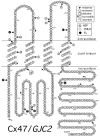


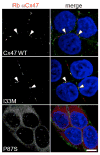
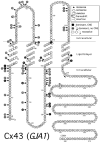
References
-
- Rackauskas M, Neverauskas V, Skeberdis VA. Diversity and properties of connexin gap junction channels. Medicina. 2010;46:1–12. - PubMed
-
- Zoidl G, Dermietzel R. Gap junctions in inherited human disease. Pflugers Arch. 2010;460:451–466. - PubMed
-
- Abrams CK, Rash JE. Connexins In The Nervous System. In: Harris A, Locke D, editors. Connexins: A Guide. Humana Press; Totowa, N.J: 2009. pp. 323–357.
Publication types
MeSH terms
Substances
Grants and funding
LinkOut - more resources
Full Text Sources
Miscellaneous

